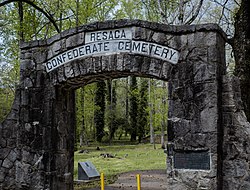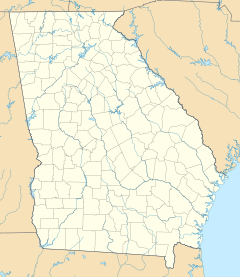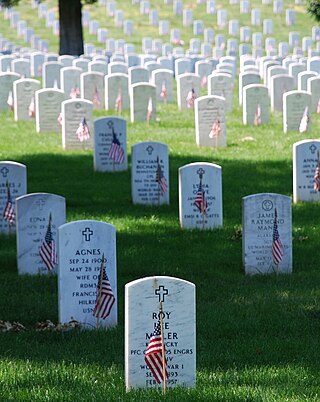
Memorial Day is a federal holiday in the United States for mourning the U.S. military personnel who have died while serving in the United States armed forces. It is observed on the last Monday of May. From 1868 to 1970 it was observed on May 30.

Resaca is a town in Gordon County, Georgia, United States, with unincorporated areas extending into Whitfield County. Resaca lies along the Oostanaula River. The population was 544 at the 2010 census. It is home to the Resaca Confederate Cemetery and a monastery.

Oakland Cemetery is one of the largest cemetery green spaces in Atlanta, Georgia, U.S. Founded as Atlanta Cemetery in 1850 on six acres (2.4 hectares) of land southeast of the city, it was renamed in 1872 to reflect the large number of oak and magnolia trees growing in the area. By that time, the city had grown and the cemetery had enlarged correspondingly to the current 48 acres (190,000 m2). Since then, Atlanta has continued to expand so that the cemetery is now located in the center of the city. Oakland is an excellent example of a Victorian-style cemetery, and reflects the "garden cemetery" movement started and exemplified by Mount Auburn Cemetery in Massachusetts.

Cassville is an unincorporated community in Bartow County in the U.S. state of Georgia. It was originally the county seat before the name was changed from Cass County. The seat was moved to Cartersville after General Sherman destroyed Cassville in his Atlanta Campaign of 1864.
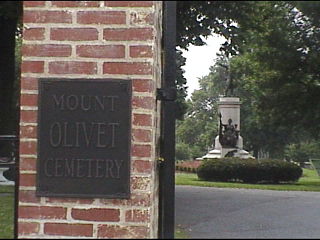
Mount Olivet Cemetery is a cemetery in Frederick, Maryland. The cemetery is located at 515 South Market Street and is operated by the Mount Olivet Cemetery Company, Inc.
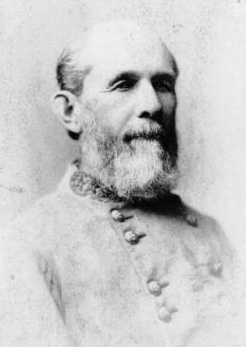
William Tatum Wofford was an officer during the Mexican–American War and a general in the Confederate States Army during the American Civil War.

The McGavock Confederate Cemetery is located in Franklin, Tennessee. It was established in June 1866 as a private cemetery on land donated by the McGavock planter family.

Arthur Middleton Manigault was a brigadier general in the Confederate States Army during the American Civil War.

Myrtle Hill Cemetery is the second oldest cemetery in the city of Rome, Georgia. The cemetery is at the confluence of the Etowah River and Oostanaula River and to the south of downtown Rome across the South Broad Street bridge.
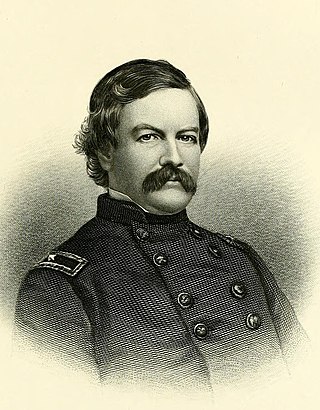
Harrison Carroll Hobart was an American lawyer, Democratic politician, and Union Army officer during the American Civil War. He was the 2nd speaker of the Wisconsin State Assembly, and served in the 1st Wisconsin Legislature as a member of the Wisconsin Senate. He was the Democratic nominee for Governor of Wisconsin in 1859 and 1865.
Patrick R. Cleburne Confederate Cemetery is a memorial cemetery located in the city of Jonesboro, Georgia, United States. It was named in honor of General Patrick Cleburne. This cemetery was a burial site for Confederate soldiers who died in the Battle of Jonesboro in 1864. This cemetery is open daily until dusk. It is one of six Confederate cemeteries maintained by the Georgia Building Authority.

Max Corput, fully documented as Maximilien van den Corput was a Belgian-American architect. He designed the second Union Station of Atlanta, Georgia. Van den Corput also served as an officer in the Confederate States Army during the American Civil War.

A Ladies' Memorial Association (LMA) is a type of organization for women that sprang up all over the American South in the years after the American Civil War. Typically, these were organizations by and for women, whose goal was to raise monuments in Confederate soldiers honor. Their immediate goal, of providing decent burial for soldiers, was joined with the desire to commemorate the sacrifices of Southerners and to propagate the Lost Cause of the Confederacy. Between 1865 and 1900, these associations were a formidable force in Southern culture, establishing cemeteries and raising large monuments often in very conspicuous places, and helped unite white Southerners in an ideology at once therapeutic and political.

The Confederate Memorial is a memorial in Arlington National Cemetery in Arlington County, Virginia, in the United States, that commemorates members of the armed forces of the Confederate States of America who died during the American Civil War. Authorized in March 1906, former Confederate soldier and sculptor Moses Jacob Ezekiel was commissioned by the United Daughters of the Confederacy in November 1910 to design the memorial. It was unveiled by President Woodrow Wilson on June 4, 1914.
The Civil War Trust's Civil War Discovery Trail is a heritage tourism program that links more than 600 U.S. Civil War sites in more than 30 states. The program is one of the White House Millennium Council's sixteen flagship National Millennium Trails. Sites on the trail include battlefields, museums, historic sites, forts and cemeteries.

Mary Ann Harris Gay was an American writer and poet from Decatur, Georgia, known for her Civil War memoir Life in Dixie During the War (1897). This described events in Atlanta during the war. Author Margaret Mitchell said this memoir inspired some of her passages in her novel Gone with the Wind (1936). Gay also published a book of poetry (1858), which she republished after the war to raise money to help support her mother and sister.
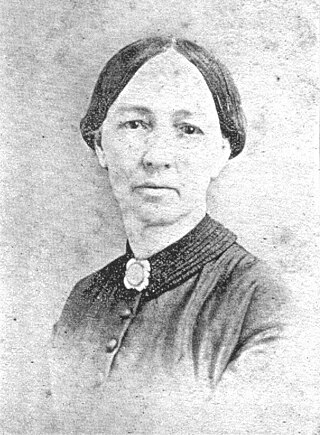
Mary Ann Williams was an American woman who was the first proponent for Memorial Day, an annual holiday to decorate soldiers’ graves.

The Confederate Obelisk is a large Confederate monument located in the Oakland Cemetery of Atlanta, Georgia, United States. The structure, a tall obelisk located in the cemetery's Confederate section, was dedicated in 1874. Due to its connection to the Confederate States of America, the monument has been vandalized repeatedly.
